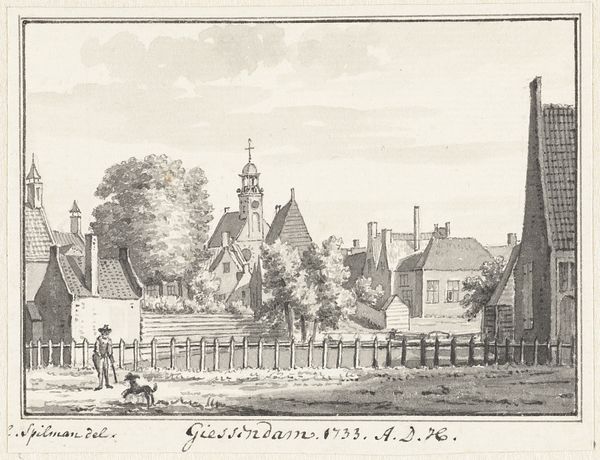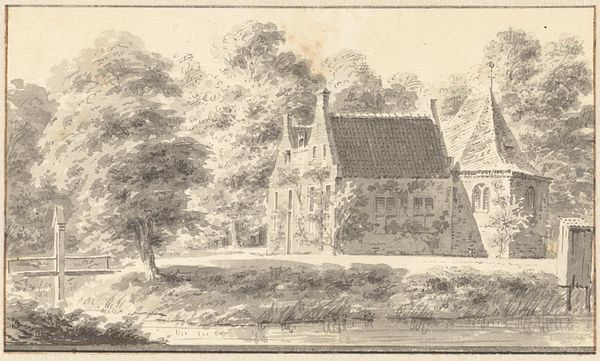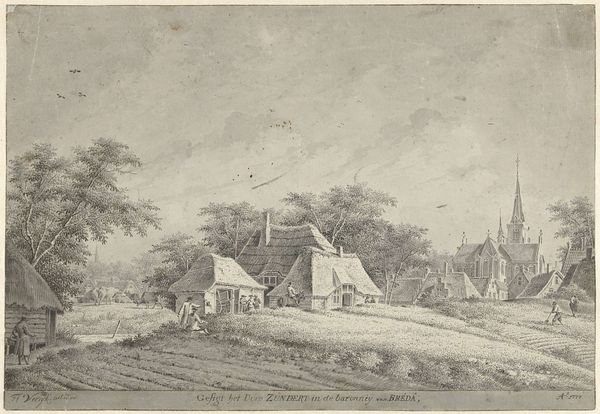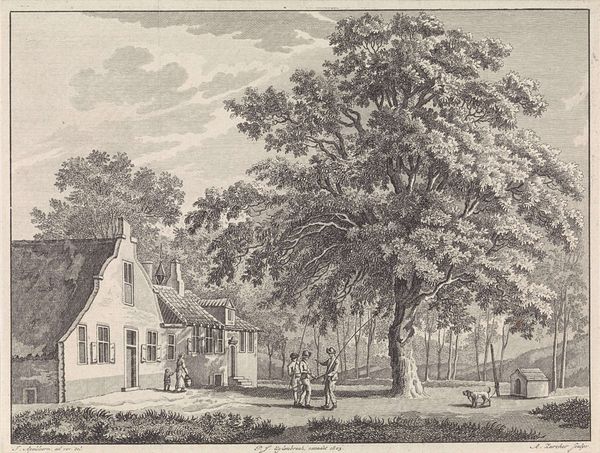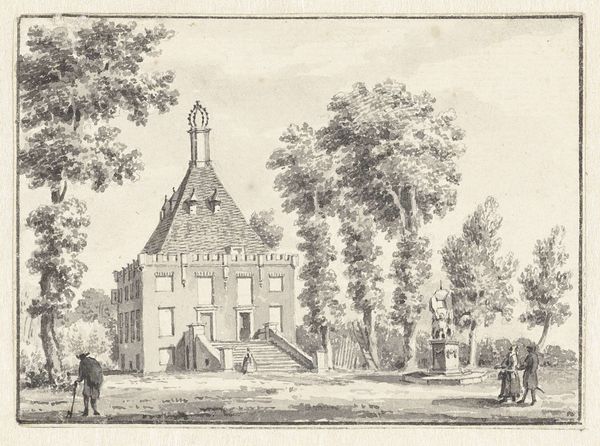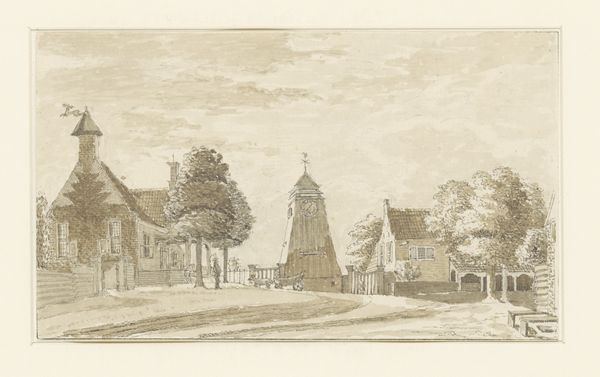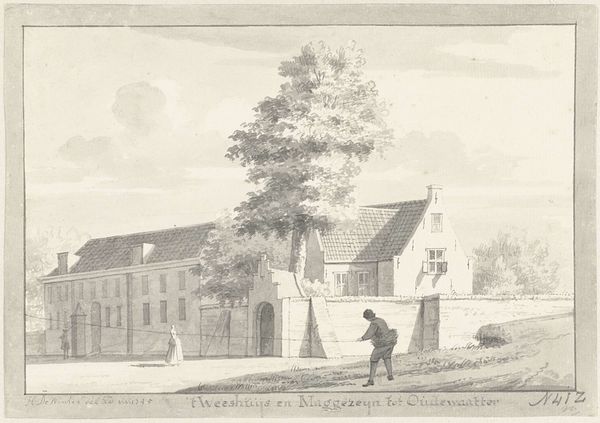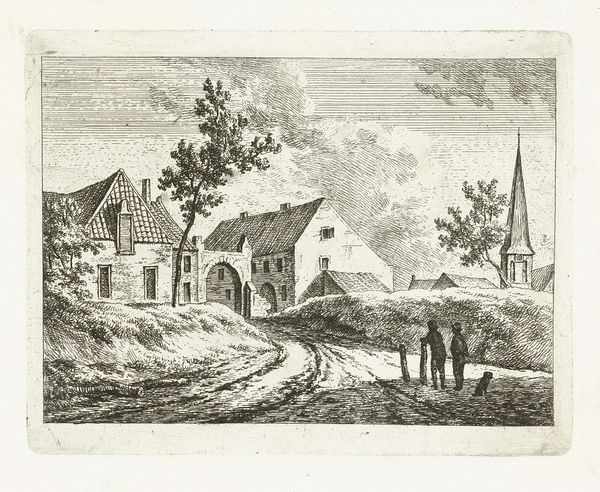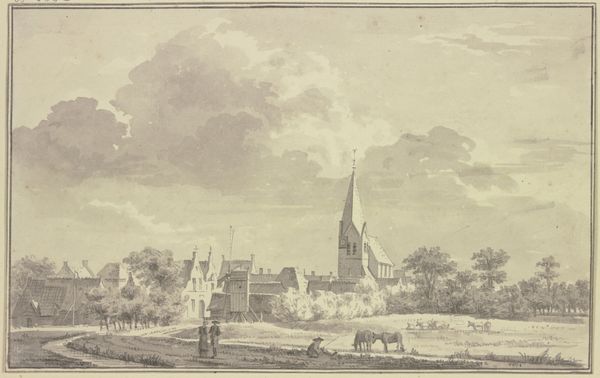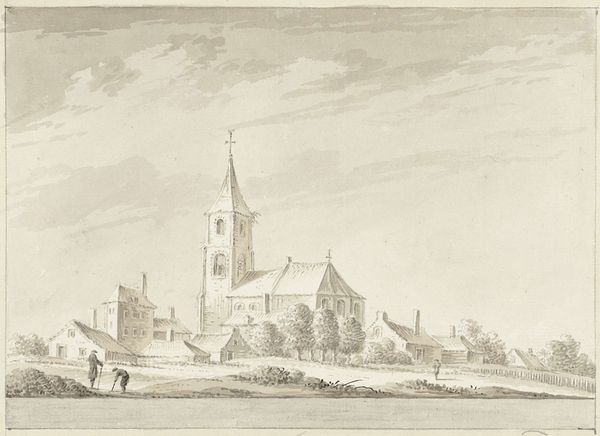
#
architectural sketch
#
aged paper
#
quirky sketch
#
pen sketch
#
old engraving style
#
personal sketchbook
#
pen-ink sketch
#
pen work
#
sketchbook drawing
#
storyboard and sketchbook work
Dimensions: height 120 mm, width 184 mm
Copyright: Rijks Museum: Open Domain
Curator: This is Cornelis Pronk’s "Noordeinder Poort te Monnickendam," created sometime between 1701 and 1759. Editor: My first impression is a feeling of tranquility. The subtle grey washes give it a hazy, almost dreamlike quality. And look at the texture in the tree! Curator: It’s interesting to consider the social context of the Dutch Golden Age here, a period of immense mercantile success and expansion that profoundly impacted Dutch identity and cultural self-representation. Drawings like these speak to a need to depict and, in a way, possess these locales. Editor: Absolutely. And Pronk, primarily known as a designer of porcelain, employing pen and brown ink, allows for incredibly detailed depiction of not only the gate and mill, but the cart and figures—the quotidian labor of this town. Curator: We can’t overlook that gate itself; acting not only as a literal portal into the town but as a constructed barrier defining inclusion and exclusion. What does this tell us about trade policies or social mobility during the period? How are the figures within the image situated concerning these power dynamics? Editor: True, it can be argued that the mill and the gate are both products of ingenuity and labor, which became symbols of prosperity and protection. It suggests that prosperity depended on controlling access, regulating flow. But it's really the penmanship I'm captivated by; the fineness with which Pronk renders these building blocks is what I appreciate. Curator: Looking closely, one sees Pronk wasn’t simply recording a scene. Note the precise linework contrasted with areas that appear unfinished. Does it reflect the hierarchies and social tensions inherent to representing labor and ownership in a society built on global trade? Editor: I think it also shows the hand of the artist in documenting daily life but more specifically labor within a specific location in early modern Netherlands. The pen becomes the primary tool to examine those features, which also translates labor as a material investigation into place and time. Curator: I appreciate how your approach connects Pronk’s technical artistry with the material culture and its attendant ideologies of the Dutch Golden Age. Editor: And you’ve highlighted how this quiet image offers insights into issues of social and cultural history through the seemingly simple image.
Comments
No comments
Be the first to comment and join the conversation on the ultimate creative platform.
